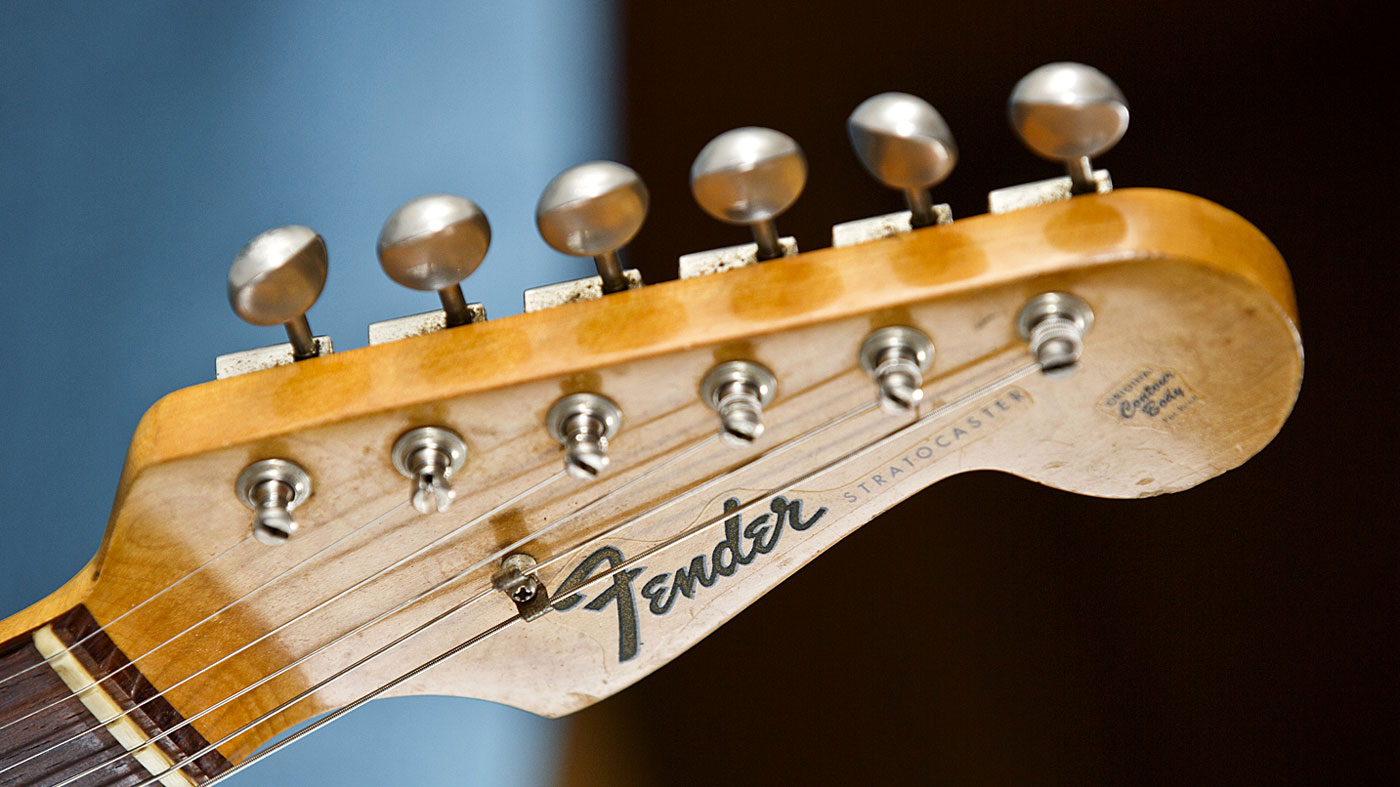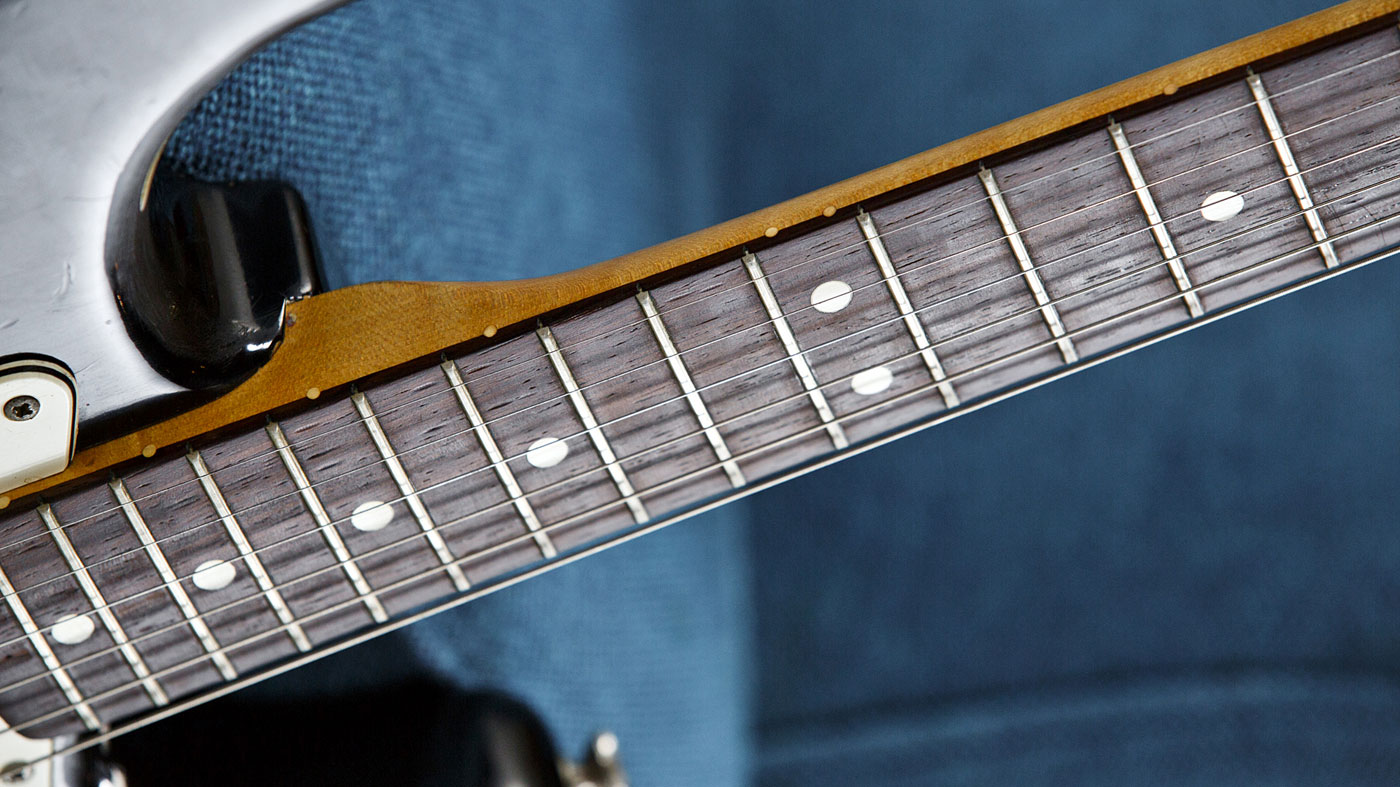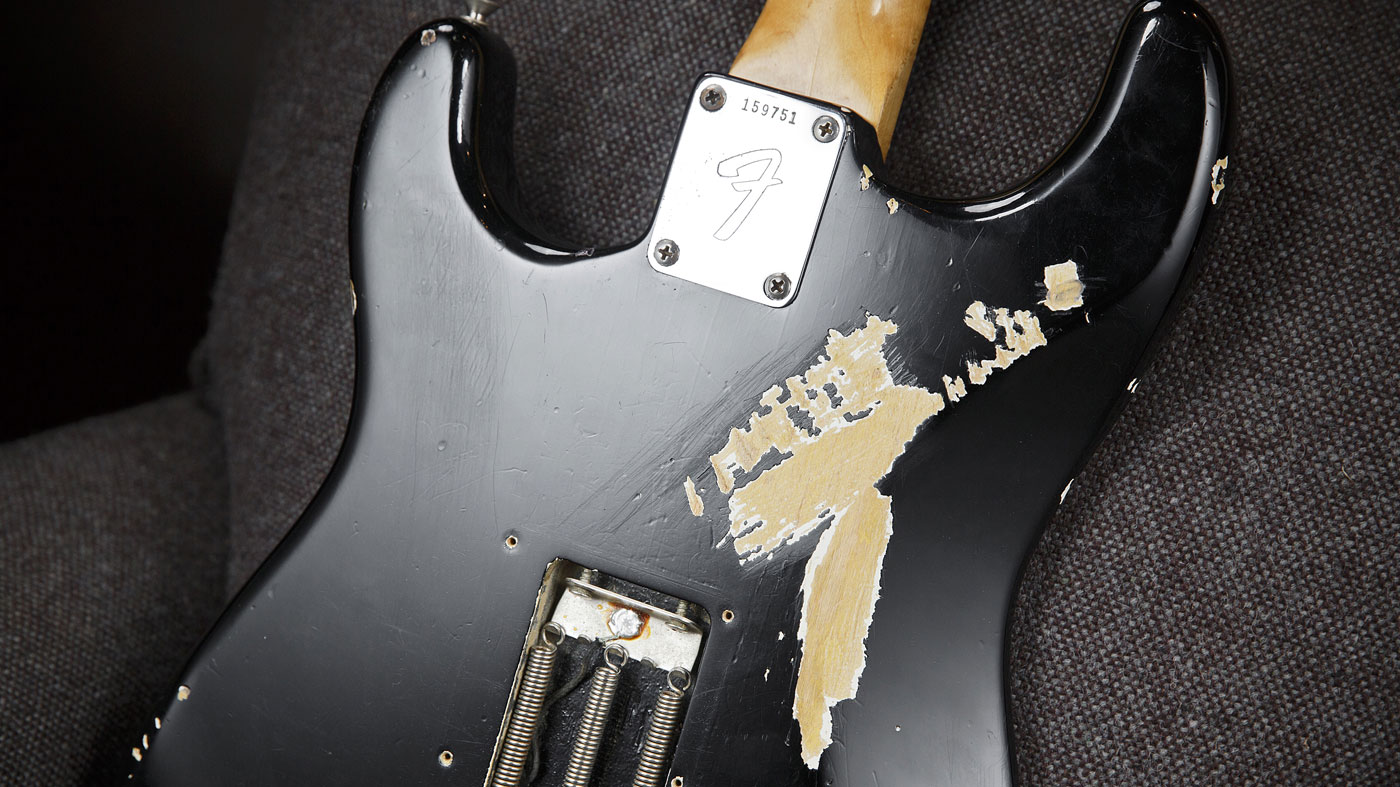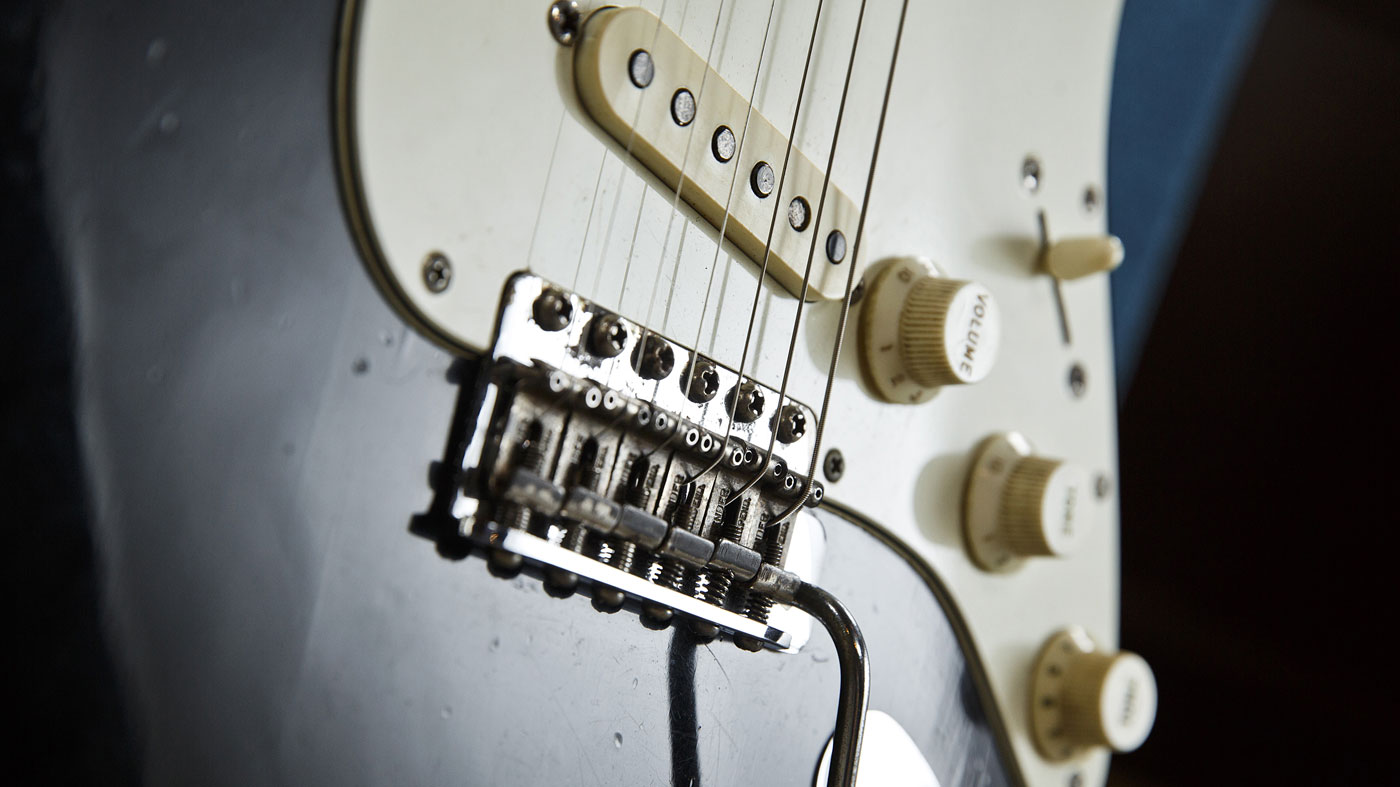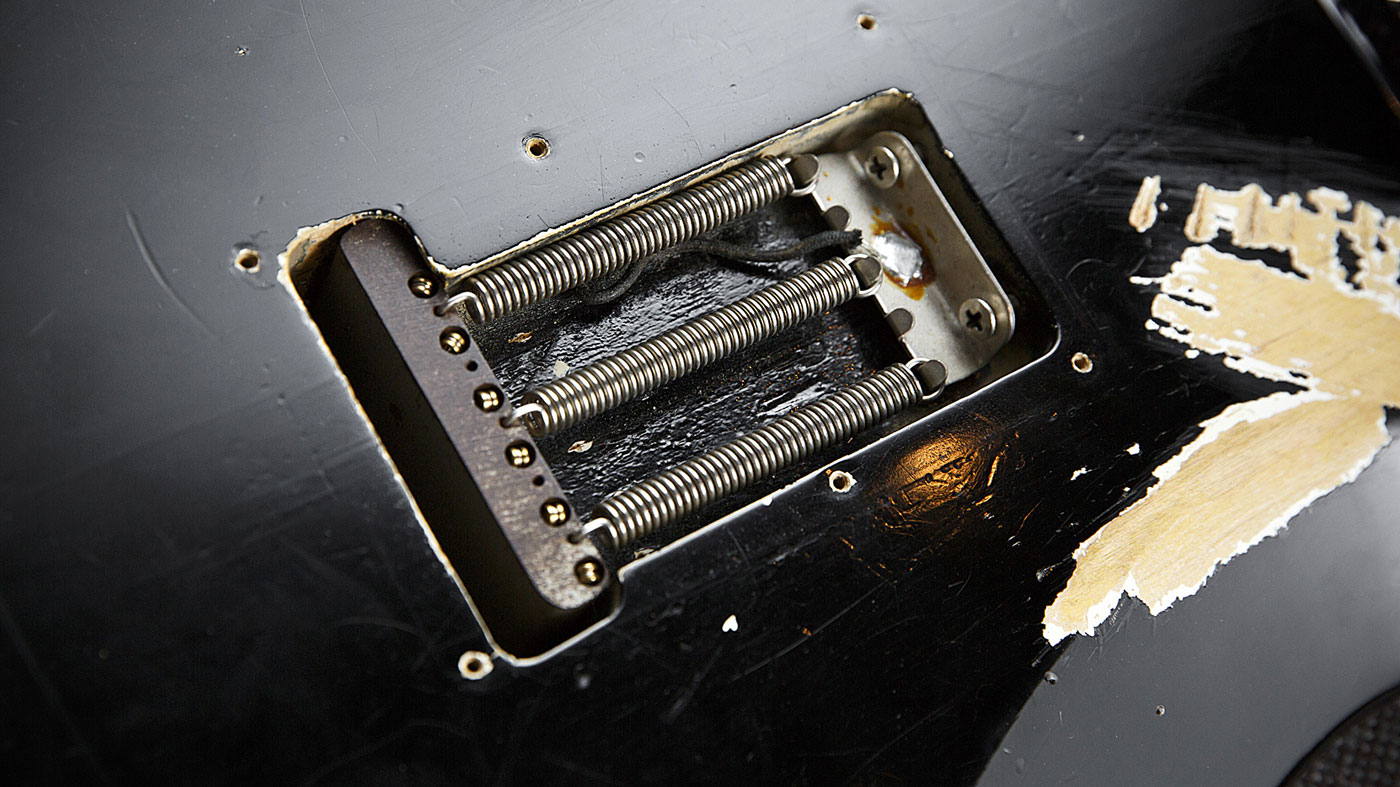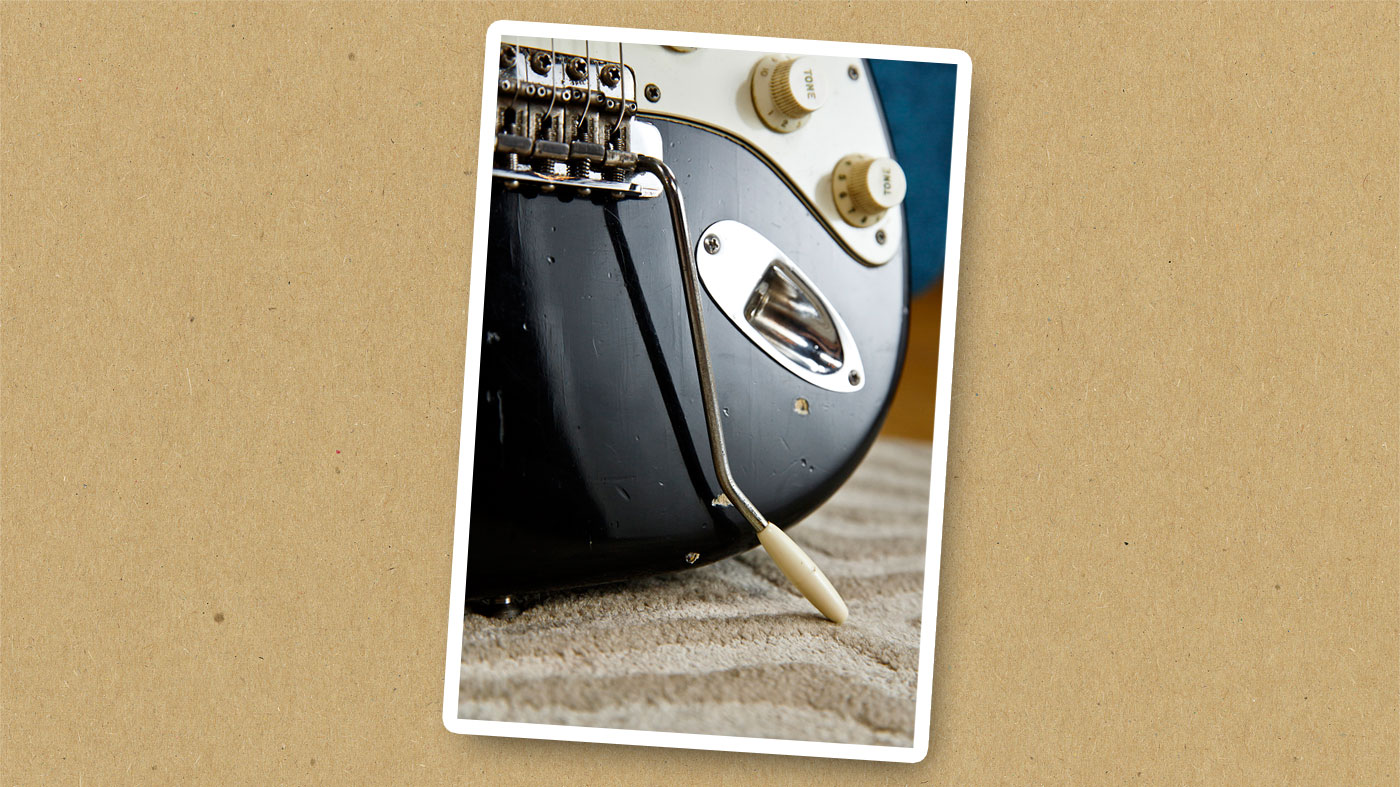Under the microscope: Jimi Hendrix's 1967 Monterey Strat - in pictures
We take a close look at a truly iconic guitar
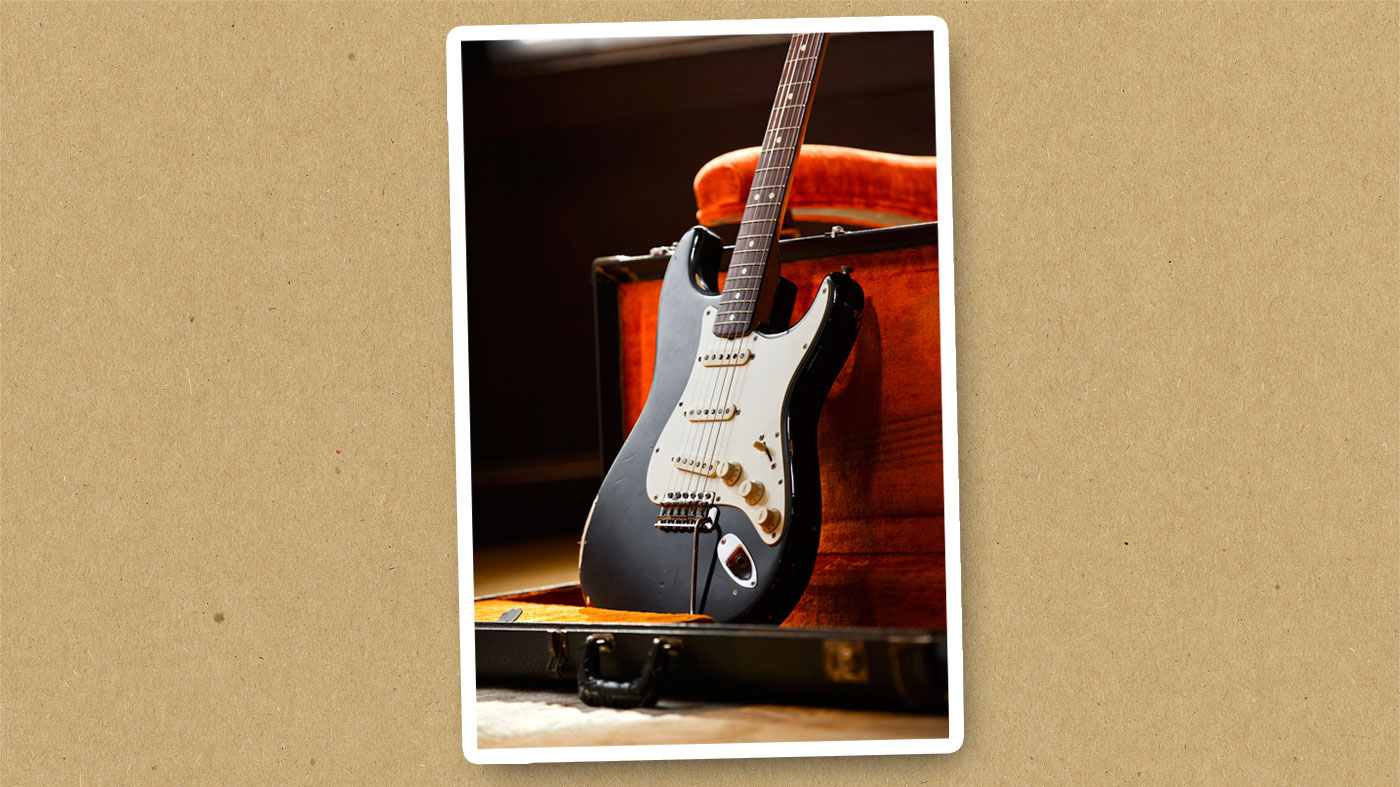
Introduction
ELECTRIC GUITAR WEEK: When the black Strat used by Jimi Hendrix at the Monterey Festival returned from America to take pride of place in a British rock exhibition at the V&A, we took the chance to experience it up close…
Back in issue 380, Guitarist magazine reported on the acquisition of the black Strat used by Jimi Hendrix at the Monterey Pop Festival in 1967, by a British collector. Since then, the guitar has been on show at Seattle’s Experience Music Project (EMP) Museum, which is also home to Jimi’s white ’68 ‘Woodstock’ Strat, which was sold to late Microsoft magnate Paul Allen, the founder of EMP, in 1992.
Electric Guitar Week is brought to you in association with Fender. Check out the Electric Guitar Week hub page for more tips and tutorials.
When it returned to London, the Monterey Strat took pride of place in a new exhibition on rock revolutionaries
Back home in London again, the Monterey Strat took pride of place in an exhibition on rock revolutionaries. Before it disappeared behind glass once more, we were offered the chance to examine this iconic Strat up close at the Groucho Club by its British owner – a lifelong Hendrix buff and guitar collector who wishes to be identified only by his first name, Justin.
Justin bought the guitar from Jimi’s US manager Bob Levine, who had had it in his keeping for many years after it was sent to him by Mike Jeffrey, Hendrix’s manager, following Jimi’s death. Levine later sold it to a private collector and provided a notarised affidavit attesting to the guitar’s identity.
It was from this collector that Justin eventually bought the Strat after years of storage out of the public eye. EMP’s curators also conducted a thorough survey of the instrument before it went on show in Seattle and Fender’s own experts have also forensically examined the guitar.
At the V&A, London’s prestigious museum of arts and culture, the Strat appeared alongside the burnt remains of the instrument Hendrix set alight at the end of the Monterey set, as Justin explains.
“This is the guitar that Jimi used for pretty much the whole gig in Monterey and the one that he burnt was the painted one that he swapped in for the very last number, which was Wild Thing. And most people in the audience didn’t even notice that he’d swapped guitars.”
Dual showmanship
The black Strat was the guitar used for what became an extraordinary performance
“In learning more about Hendrix’s stagecraft, I discovered he liked gimmicks and performance,” Justin continues. “And it was not all improvised – a lot of it was really carefully choreographed, so I chatted to Tony Bramwell, who used to run the Saville Theatre shows for Brian Epstein, and he was telling me how Mitch Mitchell would use a drum riser – itself unusual at the time, with collapsible wooden supports – so at the end of the show, when he kicked them out, it would look like the whole kit had fallen apart.
“But that was very much by design. Similarly, he said that sometimes Hendrix would have empty cabs where he could poke the headstock through the front and look like he was destroying something important, but actually it was empty inside.
“I’m also friends with a photographer called Bruce Fleming who was a good buddy of Hendrix’s and who shot the British cover for Are You Experienced and they used to hang out a lot. And he was telling me how he was backstage at Monterey and knew what was coming with the setting-fire-to-a-guitar stunt, because Hendrix was kind of pointing to this lighter fuel that he had and making a sort of hush sign.
“So, in that context, the black Strat was the guitar used for what became a great recording, musically – if you listen to the gig it’s an extraordinary performance. But then at the last number he switches to a different axe. So, this guitar is the one he used for the whole of that gig apart from Wild Thing.”
Don't Miss
Under the microscope: Mike Oldfield's Tubular Bells 1966 Fender Telecaster
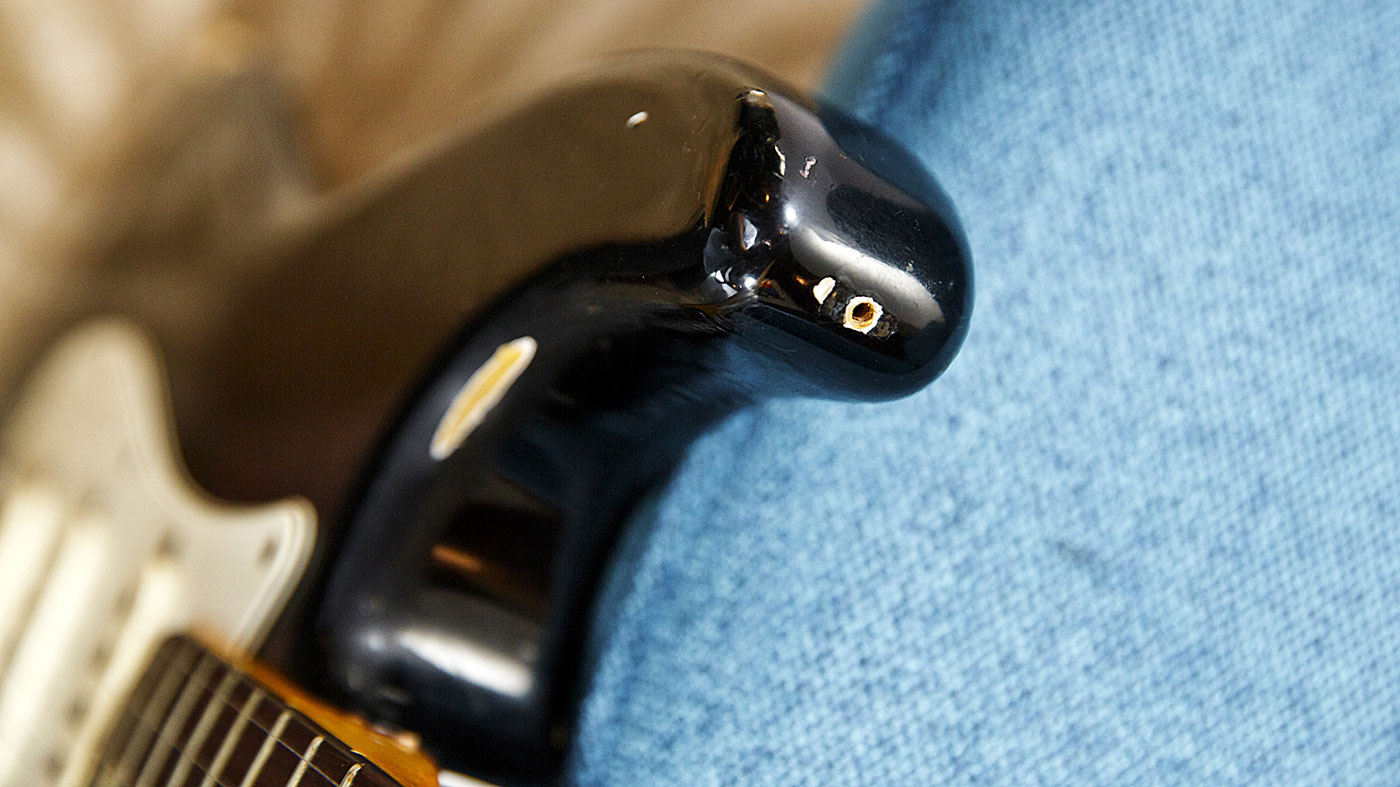
Strap button
Note the missing strap button on the conventional longer horn from which righthanded players suspend their Strats.
Don't Miss
Under the microscope: Mike Oldfield's Tubular Bells 1966 Fender Telecaster
Jamie Dickson is Editor-in-Chief of Guitarist magazine, Britain's best-selling and longest-running monthly for guitar players. He started his career at the Daily Telegraph in London, where his first assignment was interviewing blue-eyed soul legend Robert Palmer, going on to become a full-time author on music, writing for benchmark references such as 1001 Albums You Must Hear Before You Die and Dorling Kindersley's How To Play Guitar Step By Step. He joined Guitarist in 2011 and since then it has been his privilege to interview everyone from B.B. King to St. Vincent for Guitarist's readers, while sharing insights into scores of historic guitars, from Rory Gallagher's '61 Strat to the first Martin D-28 ever made.
